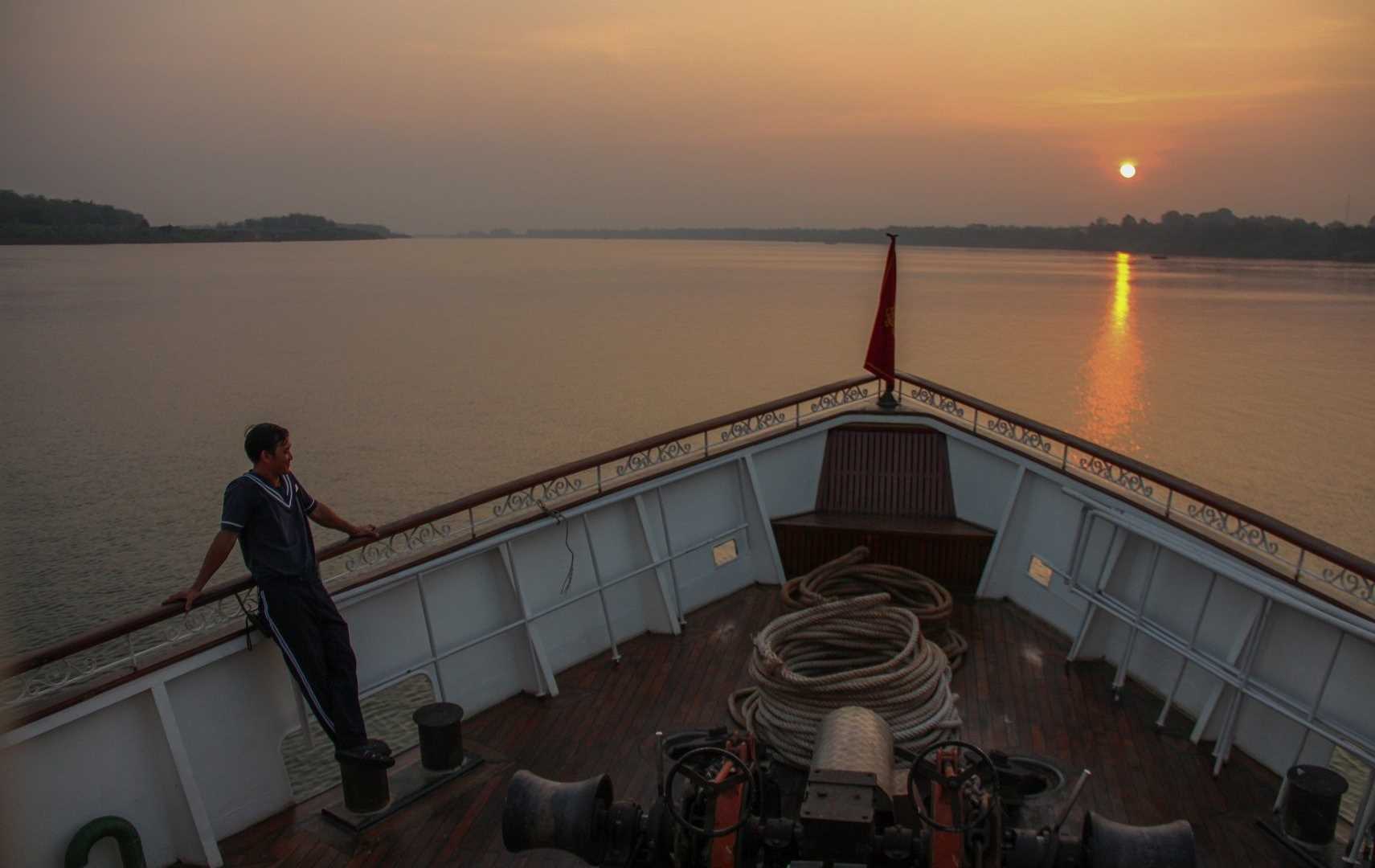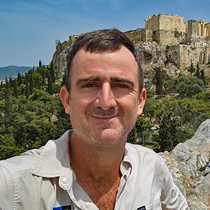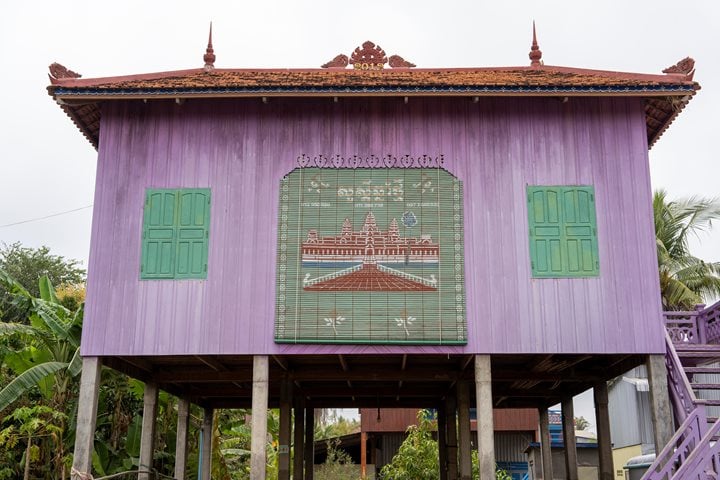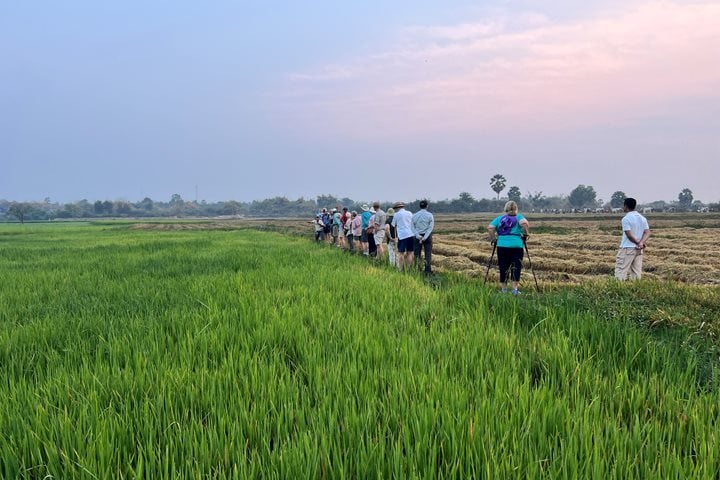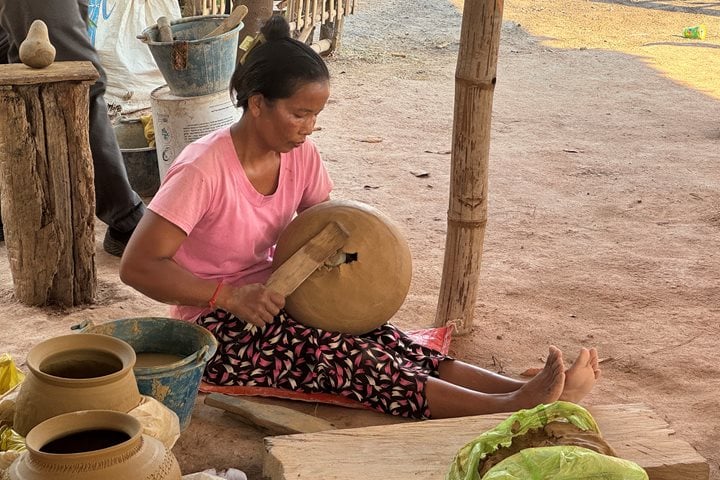Our first full day on the Mekong began with a beautiful sunrise, a bright pink ball of light shimmering over the water. The first class of Tai Chi introduces us to the gentle motions to wake up and energise the body. As we cruise through the morning air, Jahan approaches Angkor Ban, our first destination for the day. Located along the banks of the Mekong in Kampong Cham province, Angkor Ban is a small village far removed from the tourist trail. After climbing the river bank we first walk through the local monastery. Here we see the vihear (congregation hall) and monks living quarters, but also several monumental statues and sculptures, used for worship and educational purposes. The houses of Angkor Ban are built in the traditional Khmer style, with wooden structures held aloft on high stilts to promote good ventilation and provide sheltered storage space underneath. We walk through the paths and alley ways of the village, passing livestock and farming equipment as we go. One of the families is preparing for their daughter’s wedding tomorrow, with a pavilion erected to accommodate the many guests who will attend. They invite us into their home, and we see first-hand the modest living space they call home. After wishing the bride’s family well, we head back to the ship. Back onboard Jahan we experience another special part of Cambodian culture as the village monks carry out a traditional blessing for the ship, crew and its passengers. Chanting in the Pali language, the monks summon the spirits to guide us along our way safely. Once completed, we make an offering to the monastery to support them and make good karma.
During the day we head downstream the Mekong towards the capital. Photographic instructor Eric Kruszewski talks us through the fundamentals of photography, and later Robert MacNeil gives a personal account of his experience during the last days of President Kennedy.
In the afternoon we arrive at Koh Oaknha Tei, an island in the Mekong channel about 5 miles north of Phnom Penh. High-rise buildings can be seen in the distance, but they might as well be a world away because the island is primarily agricultural, with banana plantations and various crops growing in the fields. Our first stop at Koh Oaknha Tei takes us to the local monastery where we meet the head monk. He describes monastic life to us, which is rarely a lifelong commitment, as many Cambodian boys would spend at least a brief time as a monk. A monk’s life is not only one of prayer but of learning. Next we take tuk-tuks to a silk farm which also functions as a picnic spot for local tourists. Silk worms are fed on mulberry leaves and wrap themselves in a cocoon of silk fibres. Once the silk has been boiled out of the cocoons, the women draw it into a fine thread before weaving it on a loom. The looms are entirely hand operated and appear very complicated. Yet the silk weavers, deep in concentration, can produce about a metre or so of intricately detailed fabric every couple of days. We leave the silk farm on our tuk-tuks and return to ship. At the end of the day we cruise along the Mekong before turning north and heading up the Tonle Sap river.

